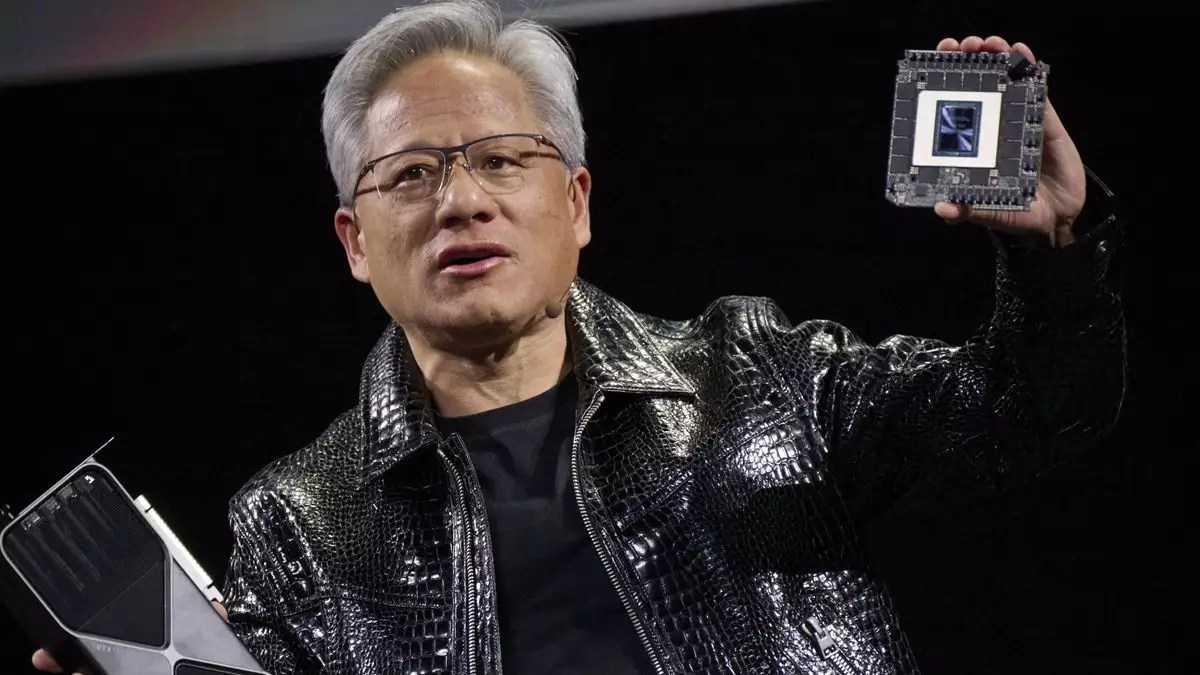Nvidia, a dominant name in the graphics processing unit (GPU) market, especially for artificial intelligence (AI), has found itself facing scrutiny regarding the performance of its newest Blackwell series of GPUs. Major clients, including tech giants like Microsoft, Amazon, Google, and Meta, have reportedly reduced their orders for these chips due to persistent overheating issues. This news raises significant questions about the future of Nvidia’s products and their potential impact on different segments of the tech market.
The concerns surrounding the Blackwell series are not trivial. Nvidia’s CEO, Jensen Huang, openly acknowledged earlier this fall that the series suffered from “design flaws,” an admission that undoubtedly raises red flags in the industry. These flaws have had direct consequences; reports suggest that many clients are opting to delay their orders or revert back to using the earlier Hopper series, which has thus far demonstrated greater reliability. This situation generates a rift in trust between Nvidia and its customers, particularly as companies venture further into AI technology that is increasingly critical for their operations.
Huang’s frank acknowledgment of low yields implies that a significant number of chips produced might not meet the necessary performance standards, further amplifying the urgency for potential buyers to reconsider their commitments to the latest technology. What remains unclear, however, is whether these design flaws are directly linked to the overheating issues that have emerged. The distinction between yields and overheating is crucial; the former subtracts from the quantity of available functional chips, while the latter speaks to the usability and reliability of those chips.
The overheating narrative surrounding Blackwell GPUs has been persistent since late last year, with reports highlighting attempts to redesign liquid-cooled racks housing these GPUs in a bid to address the temperature concerns. Nonetheless, speculation without sufficient corroboration can be both misleading and damaging. It raises a pertinent question: can we definitively attribute the overheating problems to design flaws in the chips themselves, or are they symptomatic of external — perhaps even operational — factors?
While The Information appears to be a primary source citing these overheating dilemmas, further validation from independent channels would bolster the claims and add gravitas to the discourse. Without wider verification, the narrative risks being a mere echo chamber, potentially undermining Nvidia’s reputation without a comprehensive understanding of the underlying issues.
Interestingly, while both the Blackwell and the newly announced RTX 50 series of gaming GPUs share a common architecture and technological foundation, they cater to fundamentally different workloads. Gaming GPUs focus on rendering performance under typical consumer conditions, utilizing unique software optimized for an interactive experience. In contrast, AI chips engage in far more intensive processes such as training machine learning models and executing complex calculations. This divergence in application may mean that challenges faced by Blackwell could remain isolated, with potential ramifications for the RTX 50 series being minimal or nonexistent.
That being said, Nvidia’s reputation in the gaming sector remains crucial to its market presence. Gamers and developers expect cutting-edge technology with flawless performance. Given the current climate of uncertainty around the Blackwell series, Nvidia must tread carefully to ensure that the RTX 50 family escapes unscathed from the growing scrutiny surrounding its AI counterparts.
Nvidia stands at a pivotal juncture. The potential backlash from major clients and the burgeoning concerns regarding the Blackwell series will undoubtedly shape the discourse surrounding its technological prowess moving forward. As the gaming industry eyes the introduction of the RTX 50 series, Nvidia must rise to the occasion with rigorous testing, transparent communications, and a steadfast commitment to addressing any vulnerabilities within their designs.
In a competitive landscape increasingly defined by innovation and customer expectations, the lessons learned from the Blackwell situation may ultimately determine Nvidia’s path forward — either solidifying its status as a leader in both AI and gaming solutions or challenging its position in an industry that moves at lightning speed.


Leave a Reply